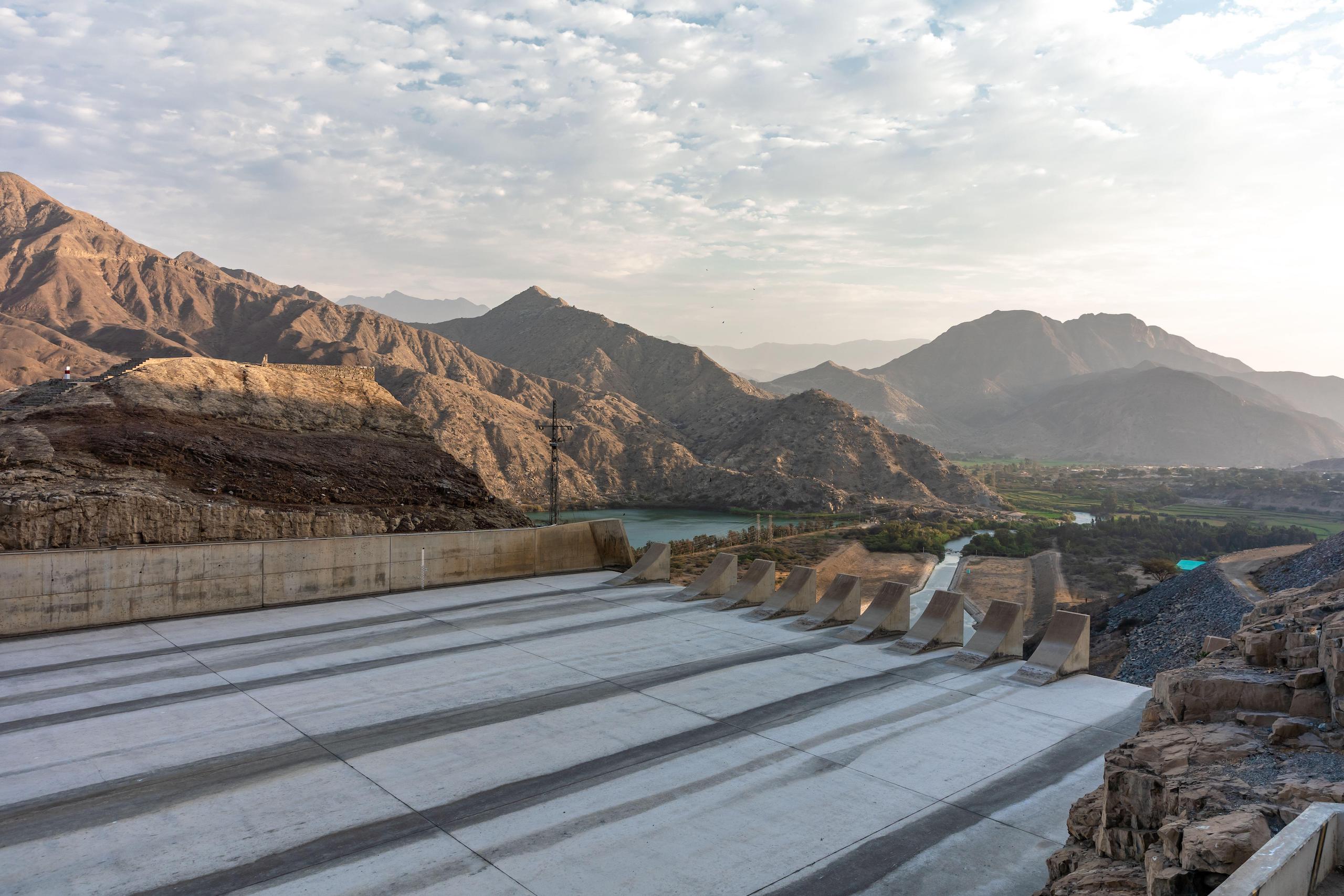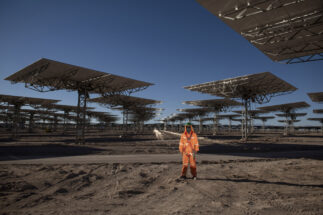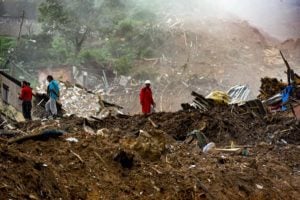Crops have dried up in the Puno region of southern Peru. “It’s only just starting to rain,” says Jaén Cañazaca, a farmer and administrator for Cecovasa, a cooperative for coffee growers in the province of Sandia. It is the end of March and the country is several months into its worst drought in 58 years.
“The lack of rain has already affected the quality of our coffee beans, making them so small that they look like wheat,” says Cañazaca, who also grows potatoes and quinoa, crops common to this high Andean region. The farmer estimates that the drought of the last five months could ruin more than 16,000 hectares of crops in Puno, where there was a 70% rainfall deficit in March, making it the worst-hit month of the emergency.
Such dry spells are no longer isolated incidents. Peru has suffered at least 10 episodes of severe drought between 1981 and 2018, reports Senamhi, the country’s meteorological service. According to the World Meteorological Organization, 2022–23 was the third consecutive summer that Peru has faced such water stress, driven by a rare “triple-dip” La Niña weather pattern.
In addition to their impact on crops, these droughts have also set alarm bells ringing over their impact on power generation in Peru, with just under half of the national electricity supply dependent on hydroelectric plants. In recent months, Peruvians have begun to feel the consequences of this high dependence.
Costly dependence
In periods of drought, some of the more than 200 hydroelectric plants in Peru have failed to produce enough energy to meet national demand. “During this drought we have even suffered power cuts, which normally do not happen in Puno,” says Cañazaca, referring to shortages in November last year.
When hydroelectric plants do not generate enough, the country resorts to natural gas and, frequently, burning diesel as an alternative, a costly and polluting source. In the current drought, hydroelectric generation fell by as much as 29% in December 2022, compared to the previous December, while natural gas thermal plants increased output by 76% and diesel plants by 208%, according to data from the country’s Ministry of Energy and Mines (Minem).
“The rain delay has meant that almost a full month was operated with diesel units, and this has already affected free users,” says Roberto Tamayo, an engineer and former director of electricity at Minem.
In December last year, so-called “free users” – large users such as commercial centres, industries, mining companies and other large firms who contract their supply directly with generators on wholesale markets – paid US$86.30 per megawatt per hour. This is almost three times what was paid in July 2021, when the price was US$30.
Although the impact was lower for other consumers, and differed by region, electricity tariffs increased by an average of 8.56% during 2022, according to the National Institute of Statistics and Information (INEI).
Cañazaca tells Diálogo Chino that this increase has impacted him and his neighbours, and that as a farmer, he has been feeling the consequences of the droughts from all sides. He says he has continued to struggle, despite support from a government subsidy for low-income families who consume less than 140 kilowatt hours a month, launched in February.
The race for renewables
For Brendan Oviedo, president of the Peruvian Association of Renewable Energies, the country’s dependence on hydroelectric power is becoming unsustainable as the climate crisis becomes more evident. “The entry of renewable energy cannot wait,” he says. If not, COES, the Peruvian electricity sector’s coordinating body, has warned of a high risk that the burning of diesel may become a permanent feature of the electricity system.
This is a worrying scenario in a country where wind and solar sources account for only 3% and 2% of installed capacity, respectively. Between them, they generate just over 3% of the country’s electricity, with hydroelectric and thermoelectric plants being the main sources.
These figures highlight how Peru is lagging behind other countries in Latin America on building wind and solar energy, in a region that could be a world leader in these sources, according to a report by Global Energy Monitor. For now, this regional race is led by Brazil, which has a combined wind and solar capacity of 27 gigawatts. Mexico (20 GW), Chile (10 GW), Argentina (5 GW) and Uruguay (2 GW) make up the rest of the top five.
If Peru develops new renewable projects, it could join this list and even overtake Argentina, according to the same study. In fact, the Peruvian Association of Renewable Energies estimates that around US$23 billion in potential investments in renewables are set to be made in Peru over the next 10 years, which it says would generate more than 120,000 jobs.
Potential, but long-term challenges
Experts agree that a lack of long-term planning is holding Peru back in the transition to renewable energy. “Many countries have chosen to have an energy strategy from the beginning, but Peru has not,” says Roberto Tamayo. “There have been efforts by companies to try to draw up a roadmap for our transition, but this has not been efficiently translated into an official document.”
Brendan Oviedo points to Chile as an example to follow, as it has set ambitious goals in its Energía 2050 plan, such as generating at least 70% of its electricity from renewable energy by 2050 and becoming carbon neutral by 2050.
“In Chile they realised a policy that has brought billions of dollars of annual investment in the last decade,” the expert explains, and highlights a contrast with Peru, which hasn’t updated its National Energy Policy since 2010. “Here [in Peru] there are many individual aims, but no legal process of medium- and long-term energy planning.”
There have been efforts to draw up a transition roadmap, but this has not translated into an official documentRoberto Tamayo, engineer and former director of electricity at Minem
Regulatory changes are currently under consideration, which could make it easier for wind and solar power plants to participate in tenders offered by electricity distributors. At present, these processes require the energy purchased to be associated with a power source that is constant or controllable, something that limits the participation of renewable sources such as solar and wind, given their variable output due to fluctuations in sunlight and wind.
To reverse this, Minem has submitted a proposed law to the country’s congress that, in Oviedo’s words, “would help reduce electricity tariffs and should not be opposed by any side”. However, the country’s ongoing political crisis has prevented it from being debated and progressing further.
Chinese investment
Despite the interest of Chinese companies in investing in renewable energy projects in Latin America, in Peru such investments have largely focused on infrastructure and hydroelectric plants, explains Rebecca Ray, a senior academic researcher at the Boston University Global Development Policy Center, and an expert on Chinese investment in the region. Even Luz del Sur, the Peruvian utility company which owns more than 30% of the electricity distribution market and whose majority shareholder is China Yangtze Power, does not plan to start solar and wind projects until at least 2024, its general manager Mario Gonzales del Carpio told Revista Minería & Energía.
Elsewhere, the Italian multinational Enel recently announced its exit from Peru, stating that it wishes to concentrate on markets where “the regulatory frameworks support a clear, orderly and accelerated energy transition”. The company has just completed the sale of its shares to China Southern Power Grid International. The transaction is awaiting final authorisation, and would put Chinese state-owned companies in charge of the production and supply of 70% of Peru’s energy, but does not necessarily guarantee greater investment in renewable energies.
According to Rebecca Ray, Peru needs to establish a solid regulatory framework and, from there, develop renewable projects. “Chinese companies have realised that Latin American countries want to stop being just suppliers of raw materials, and [the companies] are at least willing to support that idea,” she said.
Ray says it is key to “have a regulatory framework that can be trusted – that is, clear rules of the game. This is something that needs to be done, because investment is not going to come just because a country has sun and wind.”








